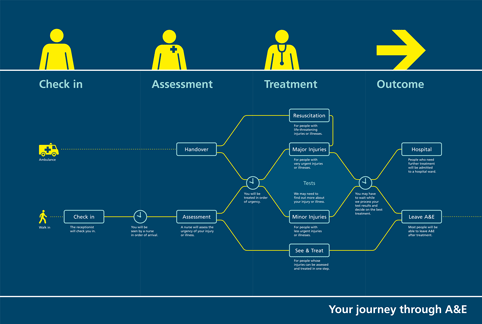Three reasons why £3.1bn is the magic number for design
Once in a while a statistic will come along that encapsulates how important the design industry is. This week we learned from Government figures that last year design contributed £3.1 billion to the UK economy.
The Department for Culture, Media and Sport figures show that design’s financial contribution was up nearly 25 per cent from the previous year. As a sector, design is growing at more than twice the rate of the wider creative industries – while the creative sector is growing at three times the rate of the UK economy as a whole.
These figures not only provide a well-deserved boost to designers but also provide a compelling case for design’s value. Here are three reasons why the £3.1bn matters.

Source: William Warby
Hard facts about design’s value are hard to find
Unlike many other sectors, economic statistics around design are few and far between – which makes them even more valuable when you do get one. It’s worth noting though that while the £3.1 billion figure comes from no less an authority than Government, the way it is calculated leaves a fair bit to be desired.
For its statistics, DCMS has defined design as “product graphic and fashion design”. This means the output of UK fashion houses such as Paul Smith and Burberry will be placed alongside that of branding and product designers. And the £3.1 billion figure doesn’t take into account work by interactive designers, which is lumped into the £35 billion generated by the IT, software and computer services sector, or campaign work, which is counted in the £10.2 billion advertising and marketing figure.
So while the statistic is a great start – and the design industry should certainly be proud of its 25 per cent annual growth rate – there’s still a pressing need for more accurate figures in design.

Source: Ma´rcio Cabral de Moura
The £3.1bn figure doesn’t even tell the full story
The figures released by DCMS refer to the gross value added contribution from design. What this means in its simplest terms is the amount of revenue created by design businesses.
What this figure clearly doesn’t cover then is the wider financial contribution made by design and designers by the successful implementation of design projects that either make or save money for organisations. Look at, for example the DBA Effectiveness Award-winning Bear branding created by B&B Studio, which helped the start-up grow sales from £0 to £6.4 million in three years. Or The Allotment’s White Logistics and Storage rebrand – winner of the DW Awards Best of Show in 2012 – which contributed to £500,000-worth of new business in six months.
And this is before we even get to design’s contribution to society and general wellbeing – you can see some examples of this in the successful public sector service design projects picked out for us here by experts.

It’s the growth that matters
Probably the most impressive figure released by DCMS this week was that design is growing by 25 per cent year-on-year – more double the rate of the wider creative industries and around eight times as fast as the UK economy as a whole.
In a bullish speech this week, Chancellor George Osborne said he believed Britain could become the richest country in the world by the 2030s. Although you could reasonably write off Osborne’s claim as bullish pre-election posturing, if you really did want to grow the UK economy at such a rapid rate wouldn’t it make sense to focus on and support its fastest-growing sectors?
-
Post a comment




